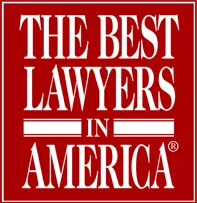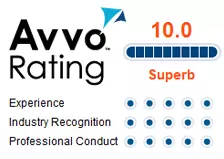In a Michigan drunk driving case it is typical for the breath test results to be entered into evidence based solely on the testimony of the breath test operator. The precedent “foundation” for the admission of the breath test results usually includes only the admission of the simulator logs.
According to Michigan’s administrative rules governing breath testing, simulator logs are necessary to “prove” that the DataMaster is working properly and that its results are reliable.
Specifically, what usually happens at a Michigan DUI trial is this; the simulator logs are offered into evidence by the prosecutor who claims they are a “business record.”
After the simulator logs are entered and received into evidence the breath test operator will then testify about the significance to be placed on the logs, and explain to the jury how and why they establish the reliability of the breath test.
Alternatively, the prosecutor, without any supporting testimony or evidence, will argue that the logs are proof positive that the DataMaster was working properly and that the jury should therefore convict on that basis.
There are many problems with this practice, and it can even be argued that very recent United State Supreme Court precedence makes this practice unlawful.
As previously discussed on this blog, the first issue about the logs relates to calling them business records. Documents kept in the ordinary course of business may ordinarily be admitted at trial despite their hearsay status. But that is not the case if the regularly conducted business activity is the production of evidence for use at trial.[i]
According to Justice Scalia, who wrote the Melendez-Diaz opinion, the analysis of documentary evidence begins with the question “is this evidence testimonial.” This is a significant change from the prior analysis of documentary evidence which began with the question “is this evidence hearsay.”
Said differently, the analysis of documentary evidence now begins with the Constitution’s Confrontation Clause rather than the rules evidence.
Consequently, if the evidence in question is “testimonial,” the exceptions to the hearsay rule are irrelevant. This irrelevance includes the inapplicability of the business record exception.
Specifically, Scalia states:
“Business and public records are generally admissible absent confrontation not because they qualify under an exception to the hearsay rules, but because- having been created for administration of an entity’s affairs and not for the purpose of establishing or proving some fact at trial – they are not testimonial.”[ii]
Because the Melendez-Diaz case did not involve simulator logs, the question is still not entirely settled. Prosecutors will undoubtedly point to the first footnote which seems to suggest that simulator logs are not “testimonial.” At least one trial judge in New York isn’t buying this interpretation.[iii]
Additionally, in dicta, Justice Scalia made two separate references to breathalyzer evidence. Like autopsies, breathalyzer results are grouped among those forensic tests that may not be capable of repetition, but that nevertheless require confrontation. In contrast, the Court expressly states that “documents prepared in the regular course of equipment maintenance may well qualify as nontestimonial records.”[iv]
As applied to simulator logs it may be argued that the second part of this statement misses the larger point; and ignores what is perhaps the most significant reason to disallow admission of the simulator logs as business records. The point missed arises not so much because of the admission of the simulator logs but rather how these logs are then interpreted.
This point, and the applicability of Melendez-Diaz to simulator logs in a drunk driving cases, has been indirectly discussed in several summary disposition or “GVR” opinions issued after Melendez-Diaz. Collectively these opinions explain why, even if considered business records, simulator logs should not be admitted without the appropriate sponsoring witnesses to explain or give meaning to them.
For example, one such GVR is the case of Barba v. California[v], a case that involved DNA but presented a different issue. In Barba a lab director testified about the results of DNA testing he did not do himself.
This decision affects an important secondary issue raised in lab analyst cases, where courts often admit the analysis evidence though a lab supervisor, testifying as a purported expert, but who simply testifies to the results as evidence upon which he basis an opinion.[vi]
This phenomenon, or artifice, in the law is sometimes referred to as peer review, substitute expert, or verification witness.[vii]
Many courts have rationalized this method of admitting the underlying analysis on the basis that: (a) the report is a business record,[viii](b) the evidence is not hearsay because it is not being admitted for its truth,[ix] or (c) the evidence is admissible simply because it is a type of evidence routinely relied upon by experts in forming their opinion.[x]
The latter two bases were methodically discredited in the opinion of the New York Court of Appeals in People v. Goldstein[xi]. The first and indeed all of the rationales, appear hollow in light of Melendez-Diaz.[xii]
As with Barba, in Michigan, after the logs are admitted into evidence the breath test operator then testifies about the underlying simulator tests that he did not himself perform. The breath test operator will have no personal knowledge about the simulator tests, and so, is essentially testifying as a substitute expert. In light of Melendez-Diaz this practice should be summarily discontinued.
Even worse, in a Michigan DUI trial the prosecutor will explain the significance of the simulator logs to the jury. In this instance what happens is the prosecutor is both “vouching” for the tests and also is making arguments that are based on facts not in evidence.
Although related, the business record exception and the substitute expert phenomenon are two separate but equally pernicious problems in drunk driving prosecutions. This is because each problem allows the state to prove the reliability of the breath test results while denying the accused his Constitutional right to confront the witnesses necessary to establish this reliability.
When properly framed by trial counsel either issue may well form a basis to keep the simulator logs out of evidence. That is, keep them out unless the prosecutor produces and calls the witnesses necessary to lay the foundation. In Michigan this would include the simulator operators as well as the 120 day inspector.
If the simulator logs are not admitted into evidence, then the breath test results cannot be admitted as there will be an improper foundation. Without breath test evidence, the prosecutor cannot prove the per se theory of the crime. The ultimate result can only be dismissal of this alternative count.
At the Barone Defense Firm it is our intention to raise this argument in every trial. If you are facing a Michigan drunk driving case, contact us today for your FREE consultation.
Patrick T. Barone would like to thank Steven N. Yermish, a public defender in Miami; whose article “Melendez-Diaz and Crawford in the Lab[xiii]” inspired this article. Many of the footnotes shown below are from Mr. Yermish’s article.
[i] Melendez-Diaz v. Maryland, 129 S.Ct. 2527 at 2438 (2009) (citations omitted).
[ii] Id.at 2540-41
[iii]High Court Ruling Voids DWI Case in Fairfax County, Wash. Post (July 18, 2009). http://washingtonpost.com/wp-dyn/content/article/2009/07/17/AR2009071703478.html.
[iv]Yermish, Melendez-Diaz and Crawford in the Lab, Champion, pg. 31 (August 2009) (internal citations omitted).
[v]Barba v. California, ___ S. Ct. _____ 2009 WL 1841609, *1 (U.S. June 29, 2009).
[vi] Champion, Melendez-Diaz and Crawford in the Lab, pg. 30 (August 2009) (internal citations omitted).
[vii] See generally Steven Yermish, Crawford v. Washington and expert Testimony: Limited the Use of Testimonial Hearsay, The Champion, November 2006 at 12.
[viii] See, e.g., MorenoDenoso v. State, 156 S.W.3d 166 (Tex. Crim. App. 2005) (holding that an autopsy report is nontestimonial and properly admitted as a business record).
[ix] See, e.g. People vs. Thomas, 130 Cal. App. 4th, 1202, 1210, 30 Cal Rptr. 3d 582, 587 (4th Dis. 2005) ( Crawford does not undermine the established rule that experts can testify to their opinions on relevant matters, and relate the information and sourced upon which they rely in forming those opinions. This is so because an expert is subject to cross-examination about his or her opinions and additionally, the material son which the expert bases his or her opinion are not elicited for the truth of their contents; they are examined to asses s the weight of the experts opinion.’); State v. Bunn, 619 S.E.2d 918, 920 (N.C. App. 2005) (forensic drug expert’s testimony that substance was cocaine, which was based on the analysis conducted by another analysis, doesn’t violate Crawford because underlying record is not hearsay since it is not offered as substantive evidence, and expert witness is available for cross-examination).
[x] See, e.g., State v. Bunn, 619 S.E.2wd at 920 (witness testified “his opinion was based on data reasonably relied upon by others in the field’).
[xi] People v. Goldstein, 6 N.Y.3d 119,810 N.Y.S.2d 100, 843 N.E. 2d 171 (2004 (explaining that he “distinction between a statement offered for its truth and a statement offered to shed light on an expert’s opinion is not meaningful in this context” and holding that evidence relied upon by the expert was hearsay, cert. denied sub non New York v. Goldstein, 547 U.S. 1159 (2006); Kay et al., The New Wigmore; Expert Evidence § 3.10.1, at 40 (“the factually implausible, formalist claim that experts’ basis testimony is being introduced only to help in the evaluation of the expert’s conclusions but not for its truth ought not permit an end-run around a constitutional prohibition.”) For a more detailed discussion of Goldstein, see Yermish, supra, The use of “verification” has also been condemned as improper bolstering. See e.g., Telfort v. State 978 So2d 255 (Fla. App)
[xii] Champion, Melendez-Diaz and Crawford in the Lab, pg. 30, 31 August 2009 (above citations endnotes 52-56).
[xiii]Yermish, Melendez-Diaz and Crawford in the Lab, Champion (August 2009).










{ 2 comments… read them below or add one }
I am waiting to see if courts will require live testimony in DUI cases where the prosecution attempts to introduce breathalyzer calibration certificates. In Massachusetts, for example, breathalyzers must be certified annually and tested periodically. This is usually proven through the introduction of a certificate from the Office of Alcohol Testing of the State Police Crime Lab. The prosecution may now be required to have the chemist who performed the calibration and testing appear in court and be subject to cross-examination.
I believe that these records do not fall within the “business record” exception to the hearsay rule because they are not maintained for police business. Instead, these records are created and maintained for the sole purpose of proving the accuracy of breathalyzer results at DUI trials.
Brian E. Simoneau, Esq.
http://www.massduidefender.com“ target=”_blank”>Massachusetts DUI Lawyer
Re: Michigan DUI Help – New comment requires moderation on: Thousands of Breath Tests Improperly Admitted in Michigan DUI Trials
Approve
{ 1 trackback }